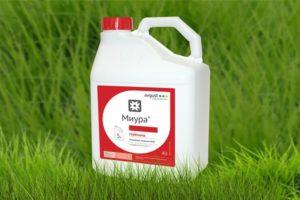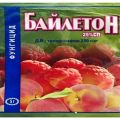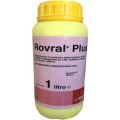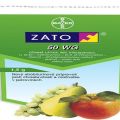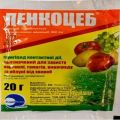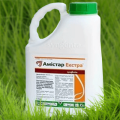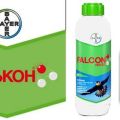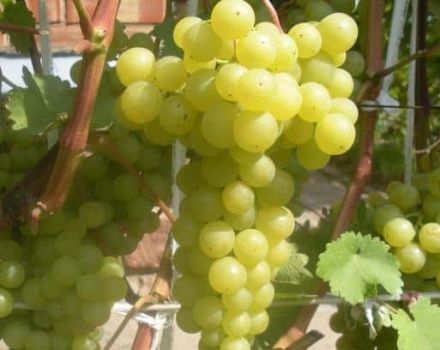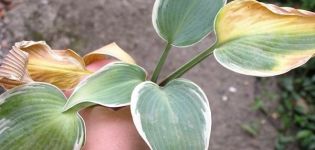Instructions for the use of fungicide Bravo, composition and form of release of the product
Fungal diseases are frequent guests of gardens and vegetable gardens. They spread quickly and often do not respond to treatment. For preventive purposes, the Bravo fungicide was developed, which prevents the development of fungal diseases. The use of this composition of contact action completely saves the harvest. Let's consider its properties and field of activity.
Content
- 1 Composition, purpose and form of release of the fungicide Bravo
- 2 Operating principle
- 3 Advantages and disadvantages
- 4 Solution preparation method
- 5 Method and time of processing, consumption
- 6 Protection period
- 7 Precautions
- 8 Toxicity degree
- 9 Compatibility with other drugs
- 10 Shelf life and storage conditions
- 11 Analogs
Composition, purpose and form of release of the fungicide Bravo
The main component of the Bravo fungicide is the low-toxic pesticide Chlorothalonil, which is responsible for the main functions of combating fungal spores. After spraying, the agent lingers on the foliage for a long time and does not allow fungal cells to germinate, which prevents infection.
The pesticide content in the product is 0.5 kg per liter of the product. The product is available as a suspension. Plastic packaging contains 20 ml, 100 ml or 1-10 liters. Used in the form of a concentrated solution.
The shelf life of the fungicide is 3 years at temperatures from minus 5 ° to plus 35 °.
Operating principle
In addition to the pesticide chlorothalonil, Bravo contains additional substances that regulate the distribution of the fungicide over the surface of the plant and ensure its adhesion. A protective layer is created that does not allow the fungus to penetrate the culture tissues.
Attention! Fungicide Bravo has a protective function, but does not heal.
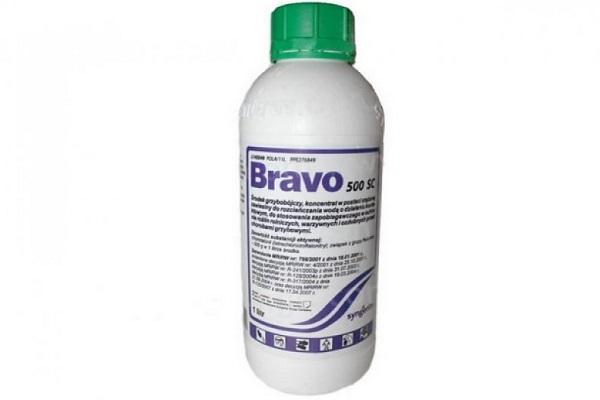
Advantages and disadvantages
Positive qualities of Bravo:
- preservation of properties after watering or precipitation;
- instant action;
- lack of phytotoxicity;
- massive area of lesions;
- compatibility with other drugs to protect against fungus;
- fast payback;
- lack of addiction in pathogenic microbes;
- long lasting effect.
Disadvantages of a fungicide:
- long stay in open water;
- danger to fish and insects;
- compliance with safety rules is required;
- ineffective drug in case of mass infection.

Solution preparation method
Before use, the suspension is diluted with water. To obtain the desired concentration, use the instructions.
The tank is washed with cold running water from the remnants of previous preparations. Then fill it in half with water and add the drug according to the instructions. The composition is thoroughly mixed, the rest of the water is added and re-mixed until a homogeneous liquid is obtained. Having achieved success, a sprayer is put on the tank.
The finished composition is used within a day. When spraying, the tank is constantly shaken so that no sediment forms.
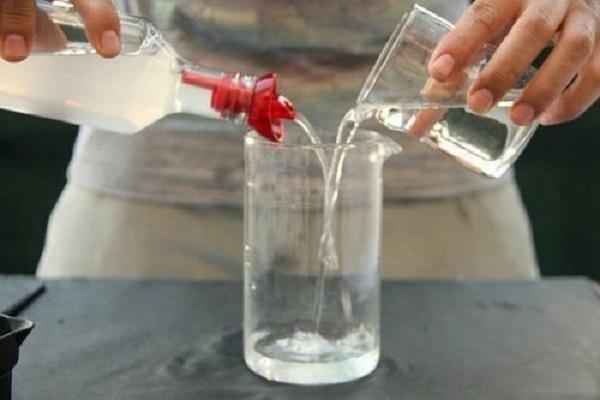
Method and time of processing, consumption
The resulting working solution is consumed within 24 hours. The norms for different crops are not the same. In order not to harm the crops, use the instructions for using the fungicide, depending on the culture.
The fungicide is intended for preventive measures, because the first spraying is done when the fungal disease is at its apogee, but the infection of cultivated plants has not yet begun. A week later, the treatment is repeated when necessary. If the plant has managed to become infected, a curative fungicide is chosen.
The best hours for spraying are early morning or evening, with a maximum wind speed of 4-5 meters per second.

Wheat
The culture is susceptible to diseases:
- powdery mildew;
- rust;
- septoriasis.
For safety reasons, they are sprayed twice a season, with an interval of one and a half months. For 1 ha, 300 liters of solution containing 2.5 liters of the product are consumed.
Barley
To protect the cultivated plant from rust (stem, dwarf), spot and powdery mildew, one treatment per season is recommended at the stage of a weak or moderate course of the disease. To prepare 300 liters of working solution, take 2.5 liters of fungicide per hectare.
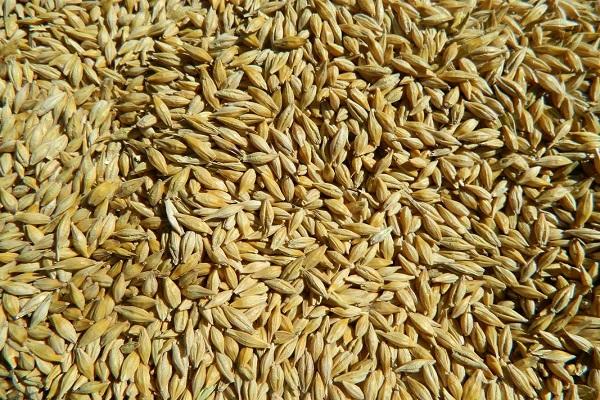
Potatoes
The culture is threatened by late blight and alternaria. Potatoes are sprayed 3 times per season. The first procedure is performed when there are signs of disease. The treatment is repeated after a week and a half. For 1 hectare, 400 liters of a solution containing 2.5 liters of fungicide are consumed.
Tomatoes
Late blight and brown spot diseases are terrible for tomatoes. To prevent their development, use 3 liters of funds per 500 liters of working fluid. According to the instructions, 3 sprays are carried out with a difference of 10 days. The first procedure is performed under conditions favorable for the formation of diseases (high humidity, low temperatures, thickened plantings).
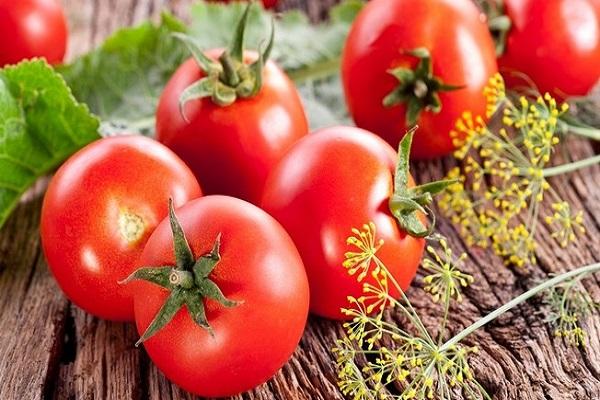
Grapes
Grapes are often infected with the following diseases:
- oidium;
- mildew;
- anthracnose.
To avoid damage, the bushes are treated with Bravo. Combine 10 l of water and 25 g of product. 100 sq. m account for 4-5 liters of such a solution. The grapes are sprayed from early spring. But the last 3 weeks before harvesting with a fungicide is not treated.
Onion
For culture, the fungus peronosporosis, which appears in the rainy period, is terrible. At the first signs of illness, onion processing is started and continued 3 times per season, every tenth day. Consumption for 1 hectare: 3 liters of product for 350 liters of working solution.
Important! Fruit trees are treated with Bravo fungicide against scab and alternatiosis. Apples and apricots are sprayed with a solution prepared from 20 ml of suspension per 10 liters of water.
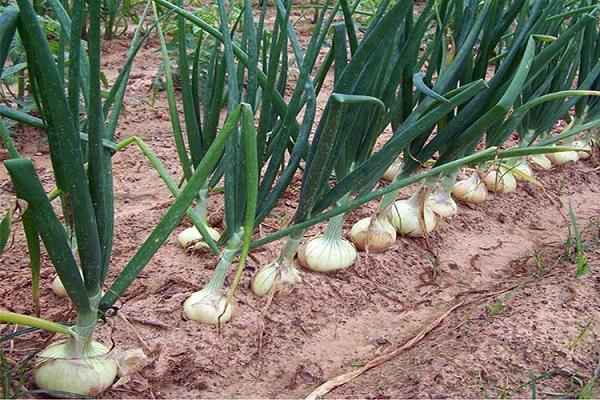
Protection period
The exposure period lasts 1-3 weeks. It depends on the sprayed plant, the degree of infection, the weather forecast. Manual work is carried out after spraying after 10 days, mechanized - after 3 days.
Precautions
A person who works with the fungicide and does not follow safety measures can be poisoned. You must wear a protective mask, gloves, glasses. If the product gets on the skin, the drops are removed with a cotton pad or napkin, and the area of the skin is washed with soap. If eyes are affected, rinse them with a stream of water for 10 minutes.
In case of fungicide poisoning, a person is provided with an influx of fresh air, a large volume of water, together with activated carbon. And they call the service 03.
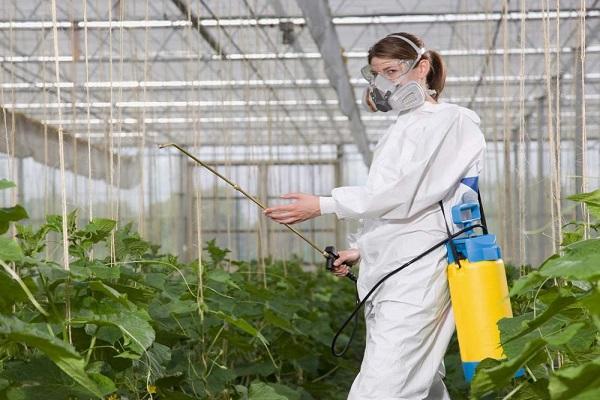
Toxicity degree
Fungicide Bravo has a level 2 toxicity for animals and humans, level 3 for bees and poultry. The active substance is dangerous for the inhabitants of water bodies, in particular fish. Therefore, the processing is carried out away from water bodies.
During processing, the drug can get on nearby plants, therefore, it is inappropriate to spray in windy weather.
Compatibility with other drugs
Bravo is used in mixtures with insecticides, arkacids and other fungicides. Before combining the preparations, a control mixing is carried out. Incompatible drugs leave sediment at the bottom of the vessel. It is not recommended to mix Bravo with other products that differ from it in the frequency of treatments.

Shelf life and storage conditions
Bravo fungicide is stored in a dry, isolated room, where there is no access for children, animals, where food and medicine are not kept. Storage time - 36 months from the date of production of the drug.
Analogs
Modifications of the fungicide Bravo, similar in composition, are produced under the following names: Bravo (500; 720; F).
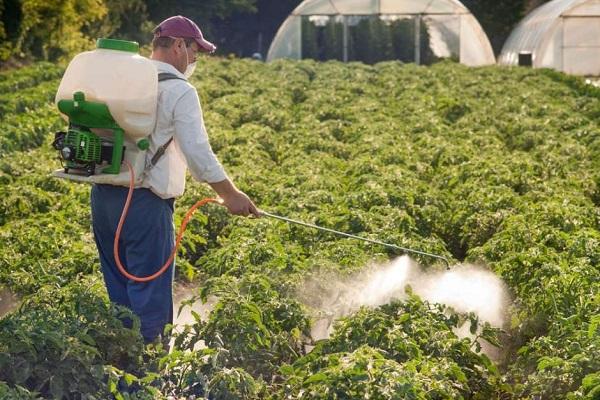
Daconil has similar properties (2787 B-75, 2787, B-75). These drugs have the same active ingredient as the Bravo remedy. Only the names differ.
Fungicide Bravo is great for personal and farm agricultural land. Based on its properties, you can create a decent barrier against fungal diseases.

